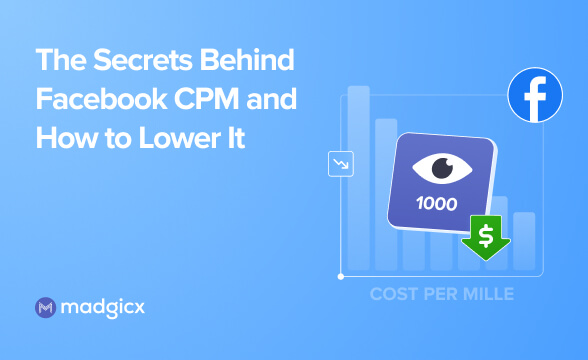Dive into the intricacies of the CPM formula in digital advertising. Explore its significance, how to calculate it, and strategies to optimize your ad costs.
Ever felt like digital advertising was a secret society with cryptic acronyms? Well, consider this blog your trusted guide. Today, we’re diving deep into one of its most elusive elements: CPM. By the end, you'll feel like you've unlocked a new level in the marketing video game.
Power up, and let's get started!
What is CPM, and what does it stand for?
In the digital advertising world, where every click and scroll has potential value, the term CPM is a crucial metric. But what does it stand for?
"Cost Per Mille," 'mille' translating to a thousand. Essentially, CPM refers to the costs advertisers must shell out for every 1,000 ad impressions.
While the CPM metric can be applied across many advertising channels, not all channels prioritize or heavily utilize it. For instance, search engine advertising might focus more on CPC, and affiliate marketing might prioritize Cost Per Acquisition (CPA).
Advertisers need to prioritize the metric that aligns best with their campaign objectives.
Defining impressions
Impressions count the number of times your ad is displayed on screen, regardless of whether it was clicked on or not. Every display counts as an impression. It’s also worth noting that an individual user can account for more than one impression if they’ve seen the same ad more than once.
Impressions vs. Reach
Reach refers to the total number of unique users who viewed your ad. While impressions tally the total number of displays, reach counts the distinct individuals who saw it.
CPM’s relevance across channels
This metric is relevant across various advertising channels, both digital and traditional. In digital advertising, CPM is used on Meta platforms (such as Facebook and Instagram), Google Ads, Twitter, TikTok, and more. In traditional mediums, CPM can be applied to platforms like television and print.
It is relevant for display ads, video ads, sponsored posts, and pretty much any format where an advertiser pays for visibility.
Why is CPM so crucial in marketing?
Ever thought about the sheer magnitude of ads users come across daily? From the moment we open our search engines, browse through our social media feeds, and watch videos online to numerous articles we scroll through on websites, we're constantly bombarded with ads.
From an advertiser's POV, understanding CPM is important because it represents your primary advertising cost. It is the metric that dictates how much visibility your ad budget can buy in the platforms mentioned above.
Let’s use a simple analogy 👇
Think of buying tomatoes at your local grocery store. If tomatoes cost $1 per KG, with a budget of $5, you can get 5KGs of tomatoes. But if the prices double? Suddenly, your budget doesn’t stretch as far, and you have to adjust your purchasing expectations. Now, say the price drops to $0.5 per KG; you could buy 10KGs with the same budget.
Similarly, in advertising, you’re purchasing a number of impressions. A lower CPM means your budget stretches further, potentially leading to more views and a higher likelihood of conversions. This directly impacts your ROAS. A high CPM, on the other hand, might challenge the profitability of your ad campaign.
What is the CPM Formula, and how to calculate it?
Understanding and utilizing the CPM formula is essential for anyone aiming to maximize their advertising ROI. While it may sound sophisticated, it’s quite straightforward!
All you have to do is divide the total cost of your ad campaign by the number of impressions (then multiply by 1,000). This equation gives businesses a clearer perspective on the effectiveness of their ad spend.

Okay, now let’s break down the CPM formula with a real-world example 👇
If you’re launching a marketing campaign with a total cost of $5,000, and you garner 500,000 impressions, using the formula, you’d find your CPM to be $10.
Why the CPM formula matters
The CPM formula helps you understand where every advertising dollar goes. When you know where every dollar goes, you can strategize more effectively, optimize your budget, and make the most out of every impression.
Easily monitor CPM with Madgicx’s One-Click Report
While understanding the CPM formula is essential, keeping track of multiple advertising accounts can be daunting. Madgicx’s One-Click Report simplifies this process for you.
With just a single click, this real-time reporting dashboard lets you analyze all the factors that affect your CPM in one place, so you can take action before your budget runs out.
Ready to simplify your reporting? Take advantage of our 7-Day Free Trial. After that, One-Click Report remains yours for just $29 per month. Jump in!

What is the average CPM rate?
The CPM rates are not fixed and can vary significantly based on a myriad of factors. Different platforms, industries, and seasonal fluctuations can all influence the rate. A high CPM is typical for niche markets with a limited audience, whereas mass-market campaigns have a lower CPM.
Let’s break down the average benchmarks according to these key factors:
Platform variations
Different advertising platforms also have unique CPM averages influenced by user demographics, ad formats, Click-through rates (CTR), and competition. I’ll cover the most prominent platforms:
Google:
The average CPM for Google Ads stands at $38.40, reflecting the premium nature of intent-driven user searches. Meanwhile, the Google Display Network ads have an average CPM of $3.12.
Meta:
Given Meta's vast user base, advertising on its platforms is highly competitive. CPM rates for Meta's advertising services vary significantly based on factors like placement (Stories, Feed, etc.), target audience, industry, and time of year.
Data shows that Facebook’s CPM in 2023 ranges between $8.35 and $11.54, placing the average at $9.94.
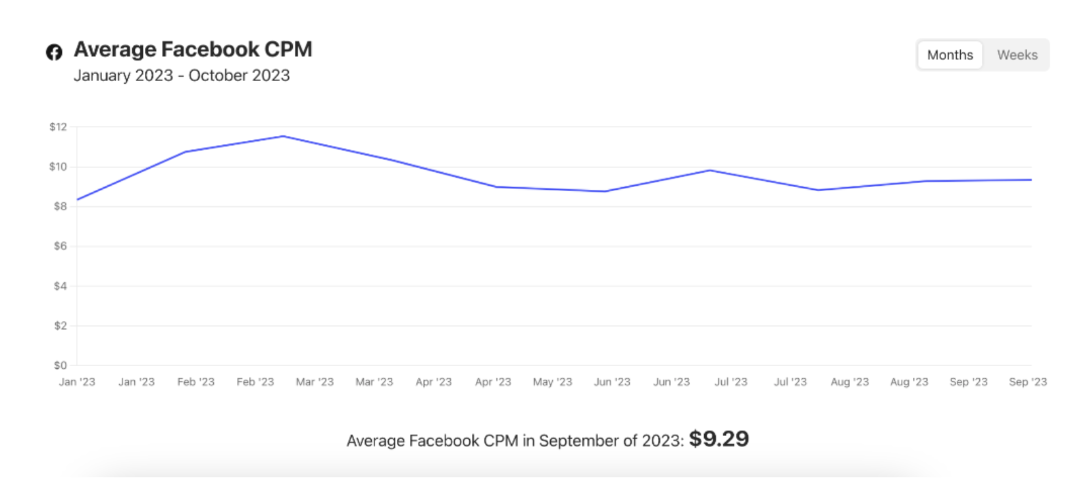
Instagram:
The Instagram CPM between January and October 2023 ranges between $6.94-$10.06. That puts the average benchmark for Instagram feed ads at $8.50. For Stories ads, the benchmark sits a little lower at $6.25.
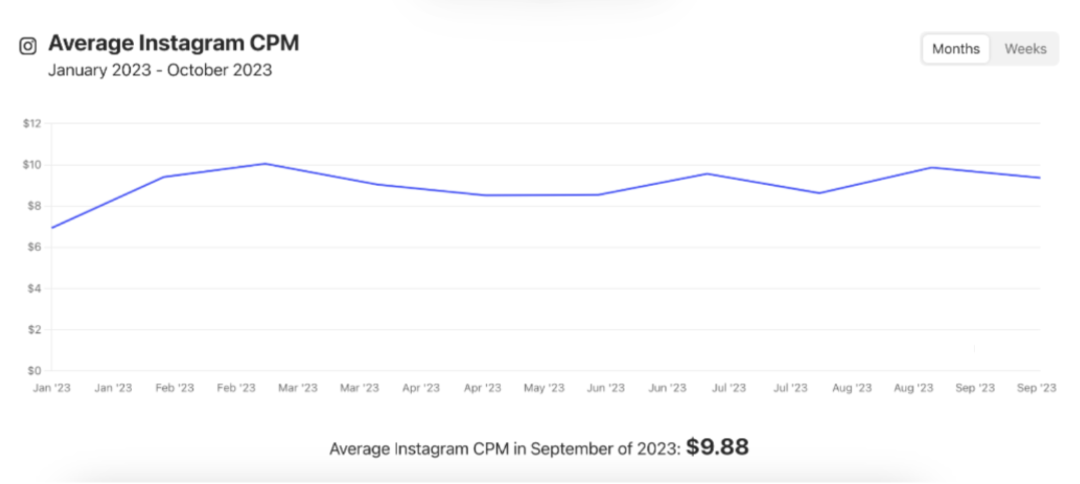
X (Twitter):
X typically has a more affordable CPM compared to Instagram and Facebook. On average, advertisers from various sectors can expect to spend around $6.46 to achieve 1,000 impressions for each advertisement.

TikTok:
The average TikTok ads CPM currently sits at a high $10. Due to the competitive nature of the platform, the ads are more expensive than Meta ads. With the right paid or organic strategy, however, it has the potential to give you the biggest ROI 💸
If you’re looking to flex your brand on TikTok but aren’t sure how to, this blog is a great place to start!
YouTube:
Like the other platforms, actual rates can vary widely. For instance, in the US, the average CPM is notably high at $33.78. In contrast, Israel's average CPM stands at $14.08 for 1,000 impressions, while Greece benefits from a modest $6.23. It’s best to look up the average rates in your country.
Also, note that you may see fluctuations in your CPM based on the type of YouTube ad you choose to go with. For instance, non-skippable ads have higher CPM than skippable ones.
Industry variations
When planning your marketing campaign, consider these Facebook CPM industry variations for effective resource allocation.
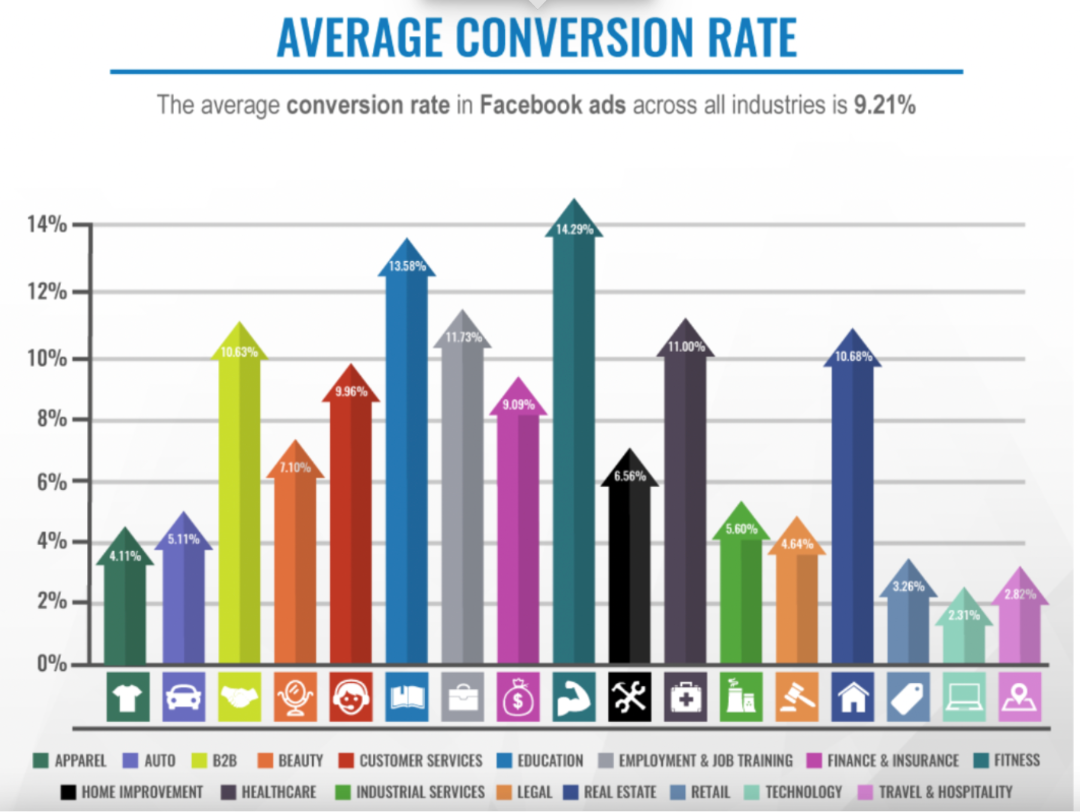
The average CPM for eCommerce is $5.33. In contrast, Consulting & Professional Services stand out at $8.93, while Apparel & Footwear hover at $5.99.
In the tech world, IT and software projects average $8.96. Interestingly, Manufacturing has the lowest CPM at $2.40, with food following closely at $2.60.
Seasonal fluctuations
One essential aspect to consider is the fluctuation of CPM throughout the year. Many industries experience a peak in CPM during the fourth quarter (Q4). The spike is due to increased competition among advertisers aiming to capture consumers’ attention during this high-purchase-intent period.

Just to give you a picture: Meta ads CPM rates rise by as much as 66% during the Black Friday and Cyber Monday period, potentially decreasing ROAS. Awareness of these seasonal trends and integrating them into your advertising strategy can be pivotal in achieving optimal campaign results.
One thing to note is that X's (Twitter's) CPM dropped significantly right after Elon Musk acquired it in October 2022, so this chart might not accurately represent its year-over-year monthly CPMs.
What is a good CPM?
You know the saying “Beauty is in the eyes of the beholder”? It’s the same with a 'good' CPM because it’s highly subjective.

For many advertisers, the value of CPM isn't just about the cost. It's about the quality of the target audience reached. For some, a high CPM model is perfectly justified if it means targeting a niche audience that leads to more conversions and, ultimately, a greater return on investment.
In such cases, even if the CPM is high, the revenue generated can justify the expense. On the other hand, some advertisers prioritize reach over niche targeting. They seek to cast a wider net, making a lower CPM more fitting for their goals.
Regardless of individual strategies, it's crucial to benchmark against industry averages. If your CPM is below these averages, it indicates that your ads are performing efficiently. Conversely, if your CPM exceeds the norm, it might be time to reassess and refine your advertising approach.
How to lower your CPM?
The fluctuation of CPM rates can make it difficult to maintain a consistent advertising budget, potentially leading to overspending. To ensure you're getting the most bang for your buck, here are three universally applicable strategies to reduce your CPM across major platforms like Meta, YouTube, TikTok, and Google Ads:
Let’s explore 3 ways you can lower your CPM:
1. Fine-tune your audience targeting
No matter the platform, the necessity for precise audience targeting remains.
The better you understand and segment your audience, the less you'll pay in CPM. This is because your ad content will be more relevant to a tailored group, who are more likely to engage with it, thus driving costs down.
On Meta and Google, use the available data to narrow down your demographics. This will allow you to target users who are more likely to be interested in your product or service, potentially lowering your CPM and cost per conversion.
For TikTok, you can harness the power of trending hashtags and sounds to reach a receptive audience. With YouTube, focus on relevant topics and interests to make sure your ads are placed alongside content your audience watches.
It’s also worth noting that changes in Apple’s privacy policy have affected the effectiveness of ads on iPhones. This means that the advertising landscape is constantly changing, and strategies that work on one platform may not work as well on another.
Therefore, it’s always a good idea to test different strategies and analyze the results to find the most cost-effective approach for your specific situation.
2. Monitor and adjust ad frequency
Exposing the same people to your ads too often can lead to ad fatigue, which can harm your engagement rates and increase your CPM. By monitoring and adjusting your ad frequency, you can prevent this from happening and keep your CPM low.
On platforms like Meta, use tools like ad frequency controls to keep your campaign fresh. This ensures that your audience doesn’t get tired of seeing the same ads, which can lead to higher engagement and lower CPM.
Google Ads offers frequency capping to limit how many times your ad is shown to the same person. TikTok and YouTube also provide similar frequency settings to prevent your ads from becoming a nuisance to people.
3. Upgrade your ad creatives
Make users stop scrolling with captivating creatives. Video ads continue to dominate due to their dynamic nature. If professional design isn’t in the budget, explore creative production solutions like Madgicx’s Creative Workflow. It allows you to create winning ads, drawing inspiration from your favorite ads in the ad library.
You can take the Ad Library for a free test drive (it’s only $9/month after the trial!).
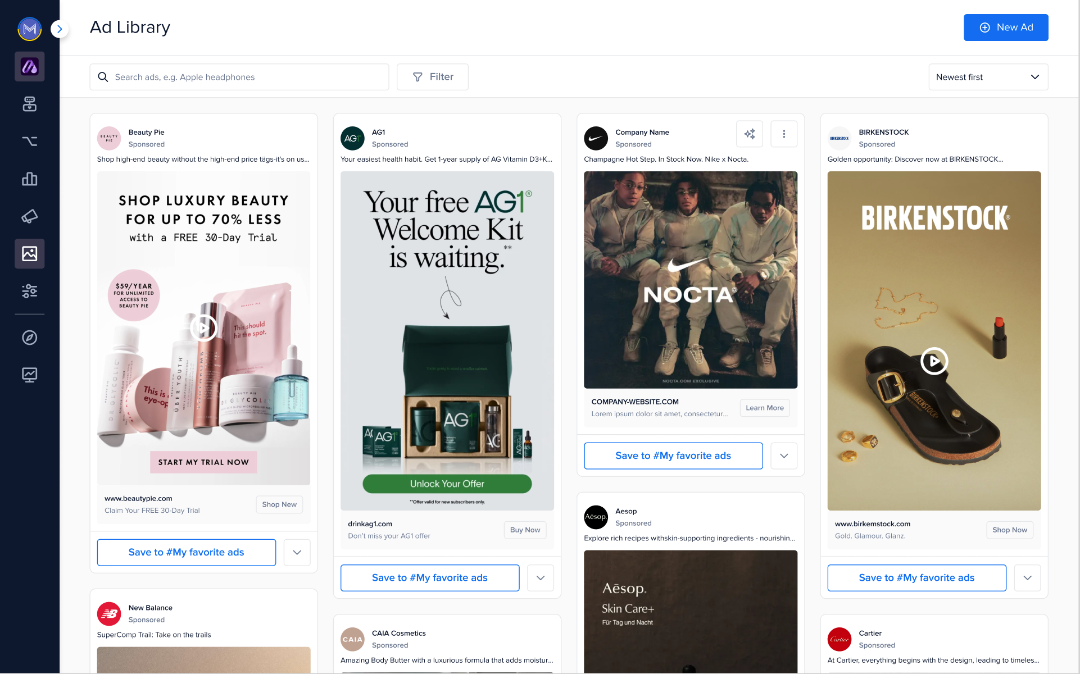
A core feature of Madgicx’s Creative Workflow is Sparkle. The platform gives you access to professional design expertise, ensuring your ads are not only of high quality but are also in line with the latest trends and platform best practices.
You can send a brief directly from the Madgicx Ad Library to Sparkle’s designers and get your ad designed in 48 hours. And the best part is that you can try it for free!
When to use CPM over CPC, CPA, or eCPM?
Choosing the right payment method can sometimes feel like trying to solve a Rubik's cube.
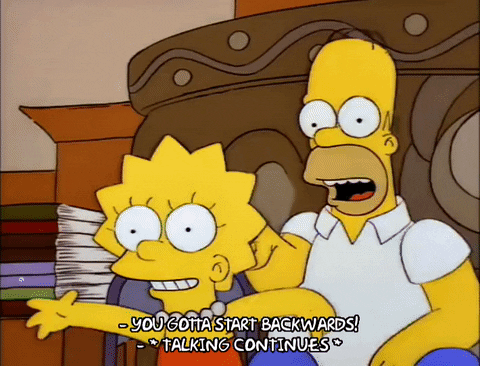
The choice between CPM, CPC, CPA, and eCPM largely depends on the specific goals of your advertising campaign and the platform you’re using.
Let’s break it down:
Google Ads
- If you’re running a campaign on Google Ads and your goal is to drive traffic to your website, then CPC (Cost Per Click) would be the ideal choice. You only pay when a user clicks on your ad.
- If your campaign aims to increase conversions, such as sign-ups or purchases, then CPA (Cost Per Action) would be more suitable. With CPA, you only pay when a user completes a specific action.
- If your campaign’s goal on Google Display Network is to increase brand visibility and reach a specific target audience, then CPM is a better choice. With CPM, you pay for every thousand impressions your ad receives, making it a cost-effective way to increase brand awareness.
- Google Ads also offers eCPM (Effective Cost Per Mille) for display ads, which is used by publishers to measure the monetization performance of digital assets.
Meta
- On Meta platforms, you can choose either CPM or CPC (with CPM being the default). If your goal is to increase brand awareness, then CPM would be the ideal choice. If your goal is to drive traffic to a website, then CPC would be more suitable.
- Meta platforms also support CPA (Cost Per Action) as a bidding option. With CPA, you only pay for actions people take because of your ad. This is useful if you want to control how much you pay for specific actions. For example, you can use CPA to monitor how much you pay on average for link clicks instead of impressions (CPM).
YouTube
- On YouTube, you can use CPM (Cost Per Mille) if your goal is to increase visibility and brand awareness.
- YouTube also supports CPA bidding if your goal is to increase conversions.
TikTok
- TikTok provides several different bidding methods, including CPM, CPC, and CPA. The choice between these depends on your campaign goals. For brand awareness, CPM would be the best choice. For driving traffic, CPC would be ideal. And for increasing conversions, CPA would be the most suitable.
The choice of payment method or bidding strategy should align with your campaign goals and the specific features of the platform you’re using. It’s always a good idea to experiment with different strategies and analyze their performance to find what works best for your campaign needs.
Conclusion
Digital advertising has evolved immensely, and metrics like CPM stand at the forefront of this evolution. Grasping the CPM formula and its nuances ensures advertisers make informed decisions, optimize their budget, and maximize returns.
In today’s digital landscape, it’s no longer just about casting the widest net but doing so smartly. Leveraging insights on CPM and other key metrics helps businesses navigate and thrive in this competitive world of digital advertising.
So, next time you’re about to launch a campaign, remember the power of CPM and use it to guide your advertising decisions!
Access your business insights on tap with Madgicx's One-Click Report! Discover the power of a single dashboard for all your key metrics, providing real-time access to your performance across Meta, Google Ads, GA4, TikTok, and Shopify with just one click.
Digital copywriter with a passion for sculpting words that resonate in a digital age.



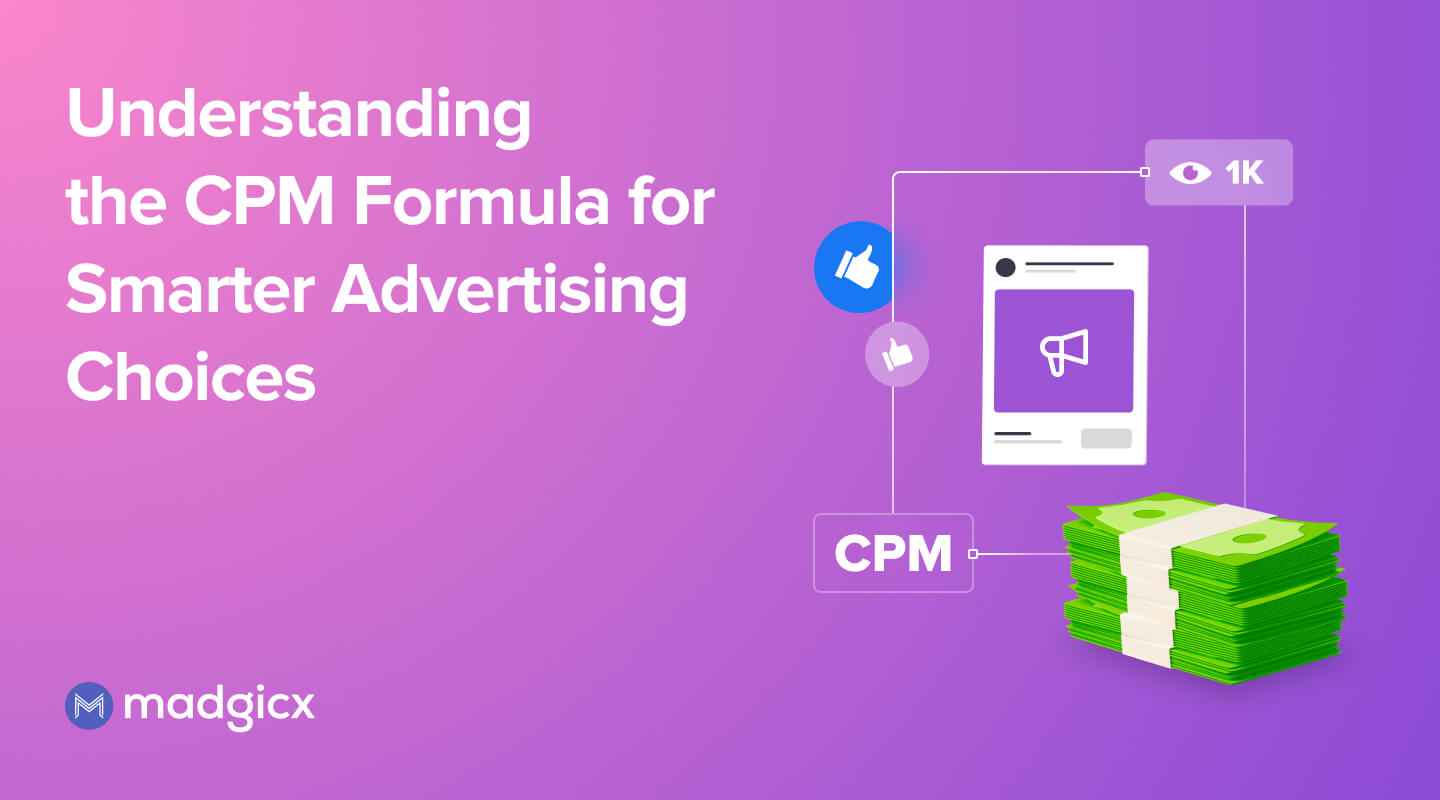


.png)
